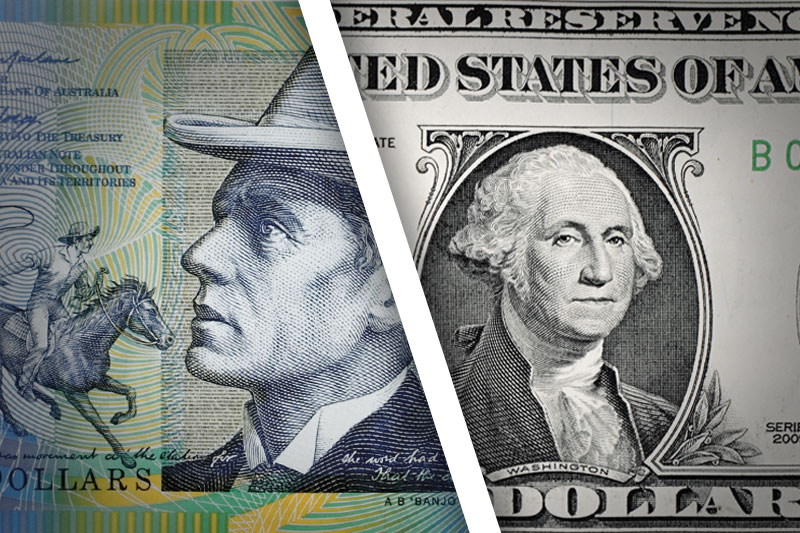Investing.com - The Australian dollar traded modestly lower against its U.S. rival during Monday’s Asian session amid some concerning domestic and Chinese data points.
In Asian trading Monday, AUD/USD inched down 0.04% to 0.9313. Last week, AUD/USD lost 0.86%. The pair is likely to find short-term support at 0.9286, the low from September 17 and resistance at 0.9402, the high from September 25.
The Aussie traded lower after the Reserve Bank of Australia said Australian private sector credit rose 0.3% last month after a 0.4% rise in the previous month. Analysts expected a 0.4% increase last month.
Compounding the woes for the Aussie, a riskier currency, The September reading of the China HSBC Purchasing Managers’ Index came in at 50.2, well below the flash reading of 51.2 and estimates calling for 51.2. Readings above 50 indicate expansion.
"The September HSBC China Manufacturing PMI edged up slightly from August. New orders remained flat from the previous month, while external demand improved,"said HSBC China chief economist, Hongbin Qu, in a statement. "Manufacturers restocking process continued but remained relatively slow. Growth is bottoming out on Beijing’s mini-stimulus. We expect continuous policy efforts to sustain the recovery."
Output "expanded for the second successive month in September, though the rate of growth slowed to a fractional pace. Furthermore, growth of new work was unchanged from the previous month and only slight. Nonetheless, new business from overseas increased for the first time in six months (albeit marginally), with panellists citing stronger demand from client bases in Europe and the US," according to HSBC.
Last Friday, official data showed Chinese industrial firms saw their combined profits jump 24.2% year-over-year in August, following an 11.6% increase in July. Through the first eight months of 2013, Chinese industrial profits increased 12.8%. China is the world’s second-largest oil consumer behind the the U.S.
China is Australia’s largest export market. Elsewhere, AUD/NZD lost 0.10% to 1.1241 after Statistics New Zealand said building consents there rose 1.5% last month following a 0.8% decline in the prior month. Analysts expected a 2.5% increase last month.
AUD/JPY fell 0.27% to 91.28 after Japan’s Ministry of Economy, Trade and Industry said that industrial production there fell 0.7% last month after a 3.4% jump in the prior month. Analysts expected industrial production to slid 0.4% last month.
Separately, the Ministry of Economy Trade and Industry said that Japanese retail sales rose 1.1% last month after a 0.3% decline in the previous month. Analysts expected retail sales to increase 1% last month.
In Asian trading Monday, AUD/USD inched down 0.04% to 0.9313. Last week, AUD/USD lost 0.86%. The pair is likely to find short-term support at 0.9286, the low from September 17 and resistance at 0.9402, the high from September 25.
The Aussie traded lower after the Reserve Bank of Australia said Australian private sector credit rose 0.3% last month after a 0.4% rise in the previous month. Analysts expected a 0.4% increase last month.
Compounding the woes for the Aussie, a riskier currency, The September reading of the China HSBC Purchasing Managers’ Index came in at 50.2, well below the flash reading of 51.2 and estimates calling for 51.2. Readings above 50 indicate expansion.
"The September HSBC China Manufacturing PMI edged up slightly from August. New orders remained flat from the previous month, while external demand improved,"said HSBC China chief economist, Hongbin Qu, in a statement. "Manufacturers restocking process continued but remained relatively slow. Growth is bottoming out on Beijing’s mini-stimulus. We expect continuous policy efforts to sustain the recovery."
Output "expanded for the second successive month in September, though the rate of growth slowed to a fractional pace. Furthermore, growth of new work was unchanged from the previous month and only slight. Nonetheless, new business from overseas increased for the first time in six months (albeit marginally), with panellists citing stronger demand from client bases in Europe and the US," according to HSBC.
Last Friday, official data showed Chinese industrial firms saw their combined profits jump 24.2% year-over-year in August, following an 11.6% increase in July. Through the first eight months of 2013, Chinese industrial profits increased 12.8%. China is the world’s second-largest oil consumer behind the the U.S.
China is Australia’s largest export market. Elsewhere, AUD/NZD lost 0.10% to 1.1241 after Statistics New Zealand said building consents there rose 1.5% last month following a 0.8% decline in the prior month. Analysts expected a 2.5% increase last month.
AUD/JPY fell 0.27% to 91.28 after Japan’s Ministry of Economy, Trade and Industry said that industrial production there fell 0.7% last month after a 3.4% jump in the prior month. Analysts expected industrial production to slid 0.4% last month.
Separately, the Ministry of Economy Trade and Industry said that Japanese retail sales rose 1.1% last month after a 0.3% decline in the previous month. Analysts expected retail sales to increase 1% last month.
